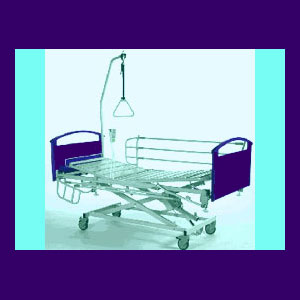
Bed-bound traction for back pain is an antiquated and mostly ridiculous therapy option for most types of painful dorsopathy complaints. Although rarely practiced in developed countries anymore, traditional spinal traction used to be a mainstay of the back pain treatment industry and is still prescribed in less developed nations where doctors have limited knowledge about the best and most up-to-date methods of treating back pain.
Research has shown that the types of weights and pulleys used to provide traction will not increase the space between vertebral bones. All they succeed in doing is keeping the patient basically immobile in bed. Meanwhile, the patient’s metabolism slows down, circulation decreases and muscular atrophy sets in. Doesn’t exactly sound like the ideal circumstances for healing, now does it?
This discussion details the many contraindications that make spinal traction a poor therapeutic choice for back pain sufferers.
What is Spinal Traction for Pain?
Traction, when used to combat back pain, is generally applied to a bed ridden patient. The individual is hooked up to a series of harnesses or orthotic appliances which are attached to carefully determined weights. These weights are intended to apply steady controlled force to the spine, in a primitive attempt at enacting spinal decompression.
Traction used to be indicated for a wide range of problematic sources of back pain, such as herniated discs, pinched nerves and even back muscle spasms. The goal of traction is to keep the patient immobile and confined to bed, allowing the weights to have a progressive effect on the spinal anatomy. However, little evidence exists showing any positive benefit from this torturous form of traction.
Traction for Back Pain Relief
Traction has been clearly shown to do more harm than good for most back pain patients. Traction retards the healing process for any types of injuries and contributes to muscular atrophy and ligament laxity. Traction is also an uncomfortable treatment and is a contributor to a negative emotional state in patients who must endure this boring and tiresome therapy for days, weeks or even months on end.
Traction might still be indicated for highly specific and rare spinal curvatures, in which other treatment options are extremely limited. Traction is still also appropriate for some types of severe back injury.
If you have been prescribed traction for almost any other diagnosed source of back pain, you might want to consider a second opinion. Remember, even though the treatment seems innocent enough, it can actually cause or contribute to serious health issues, such as embolisms, blood pressure concerns and even gangrene.
Traction for Back Pain Ordeals
I recall hearing many horror stories about bed confinement from patients who suffered through weeks of traction. I do not recall any of these people getting better and most had a very tough time getting up and around after their ordeal. Basically, traction amounts to a medieval torture, which is ludicrous in theory and even more punishing in reality. The modern view teaches to avoid it like the plague, if given an option.
I still get letters from patients in less developed countries who tell of traction as being a very common practice in their medical systems to this day. This is very scary, since it shows how the progress of time and technology seems so slow in parts of the world. To these poor souls who must deal with medical systems which are still stuck in the dark ages, I send my greatest sympathies.
The one thing that is positive about traction is the fact that it is at least a nonsurgical method of dealing with chronic back pain. I guess that makes it a least a bit better than the equally common and unenlightened surgical barbarisms, such as spinal fusion.




